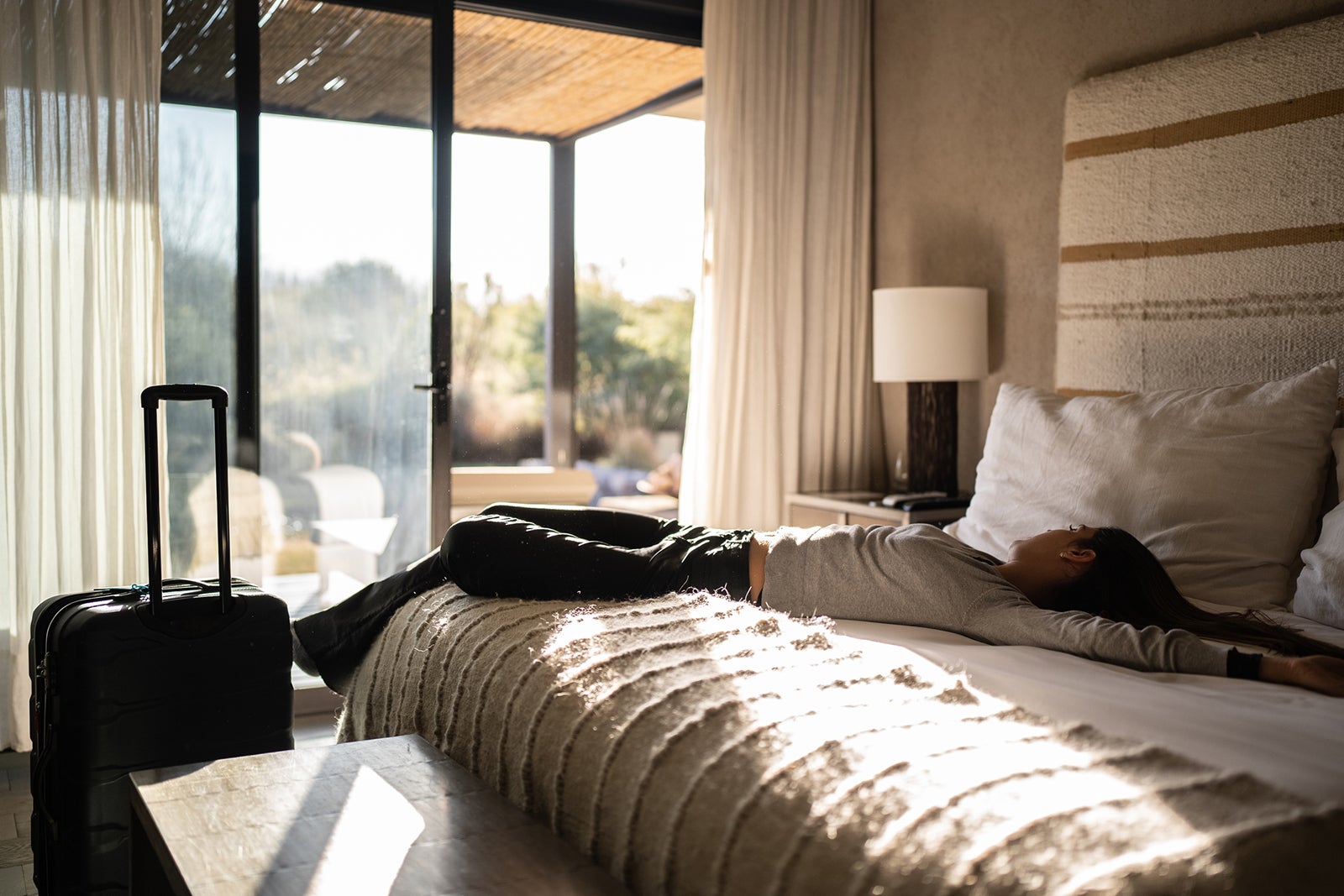How to avoid jet lag when you are traveling
It’s the best of times; it’s the worst of times. You arrive at a new destination far from your home, full of the promise of new discoveries. However, it’s also in a new time zone, many hours removed from your usual schedule. Even though you want to get out and explore, your body often has another idea: bed. But when you’re ready to go to bed, boom, you’re wide awake.
Welcome to the world of jet lag.
No matter how well I think I’ve prepared for a long-haul flight by hydrating, trying to sleep during the flight and attempting to get out in the sunlight when I land, I often find myself completely deflated and exhausted the first day or two of an overseas trip and ready for a nap (for the record, I’m strongly in the pro nap camp when traveling).
That made me wonder: Why do our bodies get so topsy-turvy when we hop time zones? I reached out to some experts to find out more.
What is jet lag?
“The reason people experience jet lag is because of our internal clock or circadian rhythm,” Dr. Jenny Yu of Healthline (a Red Ventures company) said. “When there is rapid travel across at least two or more time zones, the circadian system is not able to adjust to the change, resulting in jet lag symptoms.”
These jet lag symptoms include disturbed sleep, reduced alertness and headache.
“Air cabin pressure can also contribute to jet lag symptoms,” Dr. Yu added.
As we’ve also noted in the past and Dr. Yu confirms, eastward travel is worse for jet lag than westward travel because more time is lost while traveling.
How long does jet lag last?
“How one’s circadian rhythm resynchronizes depends on various factors — how many time zones traveled, the direction of travel and the person’s ability to adjust,” Dr. Yu said.

Daily Newsletter
Reward your inbox with the TPG Daily newsletter
Join over 700,000 readers for breaking news, in-depth guides and exclusive deals from TPG’s experts
The good news is that jet lag will always go away eventually. The key is to speed up the acclimation process so that the effects cause as little interference as possible.
Related: My new strategy for maximizing sleep on transatlantic flights
How to get over jet lag
In addition to talking to medical experts, I also consulted with one of the best sources I know: TPG’s staff of world travelers, who have plenty of experience dealing with time zone hopping. Here are all their combined tips, tricks and techniques to use when you travel to get over the jet lag hump in addition to other suggestions from various travel experts.
Related: The best flights to ease jet lag when traveling to or from London
Adjust your schedule before you travel
Dr. Yu tells us that you can start to combat jet lag before you ever set foot in the airport.
“Prep before you travel by staying hydrated, avoiding alcohol, getting better quality sleep ahead of the trip and slowly adopting the new schedule,” Dr. Yu said.
This prepping is actually important in feeling fewer symptoms once in a new destination, Dr. Yu explained.
Book a flight on a Dreamliner
The kind of plane you fly on can make a big difference in how to avoid jet lag. Clint Henderson, managing editor at TPG, swears by this flight tip.
“I always try to get on a newer plane,” he said. “The 787 Dreamliners have better cabin humidity and are better pressurized, which cuts down on jet lag and is a more conducive cabin environment to achieve better sleep.”
Skip the alcohol during the flight
Dr. Henry Ting, Delta Air Lines‘ chief health officer, advised fliers to be mindful of alcohol intake.
“Alcohol can disrupt sleep both on your flight and after you land,” he said. “Alcohol is a diuretic so it can increase dehydration, making symptoms of jet lag worse. It’s important to enjoy alcohol in moderation to feel your best.”
Get comfortable and stay hydrated
On the plane, Dr. Yu says it’s important to stay hydrated and avoid stimulants such as alcohol, caffeine and/or sugar. Sleep on the flight, especially if that aligns with the destination’s time.
“If you need to be alert when you arrive at your destination, work with your doctor to advise on taking melatonin or Benadryl to assist in sleep during a long flight,” she said.
Dr. Ting also suggests investing in a memory foam neck pillow “for a comfortable neck position” and a memory foam eye mask to block out the light and help passengers sleep in flight.
Use an app to help you adjust
Also consider using an app to help you get over jet lag. Katie Genter, a senior writer at TPG, is an app fan.
“If you want to be on the time zone of your destination, use an app like Timeshifter,” she said. “It can be a bit annoying, and some of the recommendations of when to sleep while in transit can be inconvenient — but it does work.”
Get outside in the daylight after you arrive
The easiest tip to follow is also the most recommended by both the experts I spoke with and TPG staff: Get outdoors after you arrive in your destination so you can spend time in the fresh air and sunlight.
“Natural light exposure is the best mechanism to influence the internal clock (circadian rhythm), so get plenty of light if possible,” Dr. Yu said. “A walk outside helps, and stay on the destination schedule — which means no nap that first day.”
Dr. Ting agrees.
“Try to stay on daylight/night cycles regardless of destination and sleep when it is dark [out],” he said. “Exercise is great during daylight for endorphins and to stay on the correct circadian rhythms.”
Related reading:

